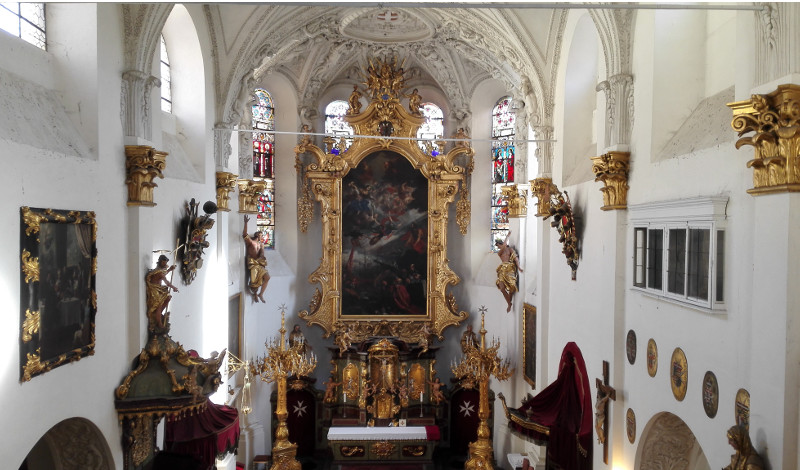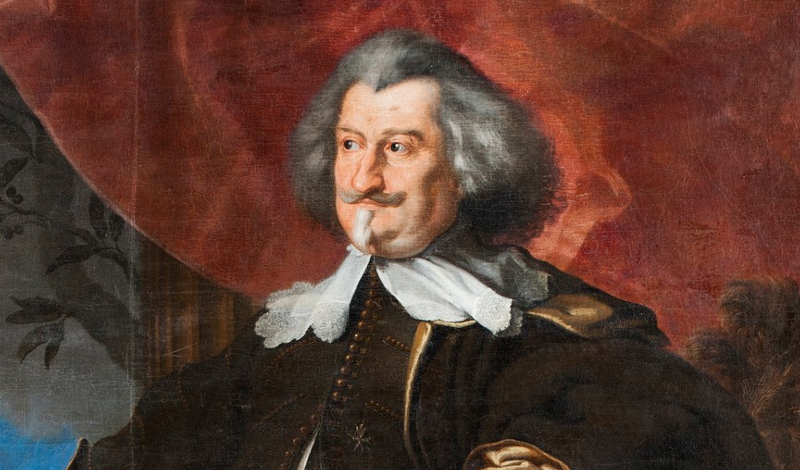About the Church

The Church of Our Lady beneath the Chain of the End of the Bridge
is one of the oldest and most notable religious sites in this country. Why “beneath the Chain” and the grammatically archaic localisation “of the End of the Bridge”? In 1153 Vladislav, the second King of Bohemia from the Přemyslid dynasty and the first with a hereditary right to the Bohemian Crown, took Judith as his wife. The wedding procession led across a new stone bridge over the Vltava, and at either end of the bridge was a Romanesque church. The church on the Lesser Town side was therefore called Judith’s Church, and shortly thereafter, following the king’s return from the crusades, it was given to an international order of knights devoted to John the Baptist of Jerusalem. Tolls were collected here, as at every bridge, and hence the designation “beneath the Chain”. The church was a basilica with a central nave and aisles on either side, where Romanesque portals welcome us as we enter between the gothic towers that were added later. Following catastrophic fires and pillaging during the Hussite Wars, the church was regularly restored, and it acquired its present form during its renaissance and baroque reconstruction. This was the work of the architects Giovanni Batista Spinetti, Carlo Lurago and Santini de Bpsi at the turn of the 17th and 18th centuries. The oldest surviving gothic remnants are the wall paintings behind the Chapel of St John of Nepomuk.
When entering the church our attention is drawn to the large altar with a monumental painting by Karel Škréta, completed in around 1640. It is unusual to find such depictions of specific conflicts in Christian churches. Below the Mother of God blessing the soldiers of the Order of St John of Jerusalem, where the Order’s Grand Master, Jean Parisot de la Vallete, is also depicted, there is the battle fought for the island of Malta against Mustafa Pasha’s fleet in 1565. Since then the Order has been known as the Knights of Malta, and the capital city of the island they gained in this victory was given the name Valleta. Equally unique are the nine chapels along the church’s aisles, with the Chapel of St John of Nepomuk in memory of the saint who was dragged away and drowned in the Vltava, and opposite it the Chapel of St Barbara and the Sacred Heart of Jesus. Heading back to the entrance, these are followed by the Chapel of St John the Baptist, with a picture of the saint with Christ by the baroque painter Michal ze Steinfelsu. The chapel is secured with a grill to store the Order’s treasure. Opposite it we walk past a marble statue over the crypt of Grand Prior Rudolf Colloredo-Wallsee, the general who was victorious against Swedish forces in 1648, and we then see an altar with the oldest painting here, by an unknown master from 1591, where next to John the Baptist the Mother of God nurses the Infant Jesus with her breast exposed, a unique subject in Christian iconography. We then pass the Chapel of the Blessed Deodatus, a priest of the Order who was martyred during the English Reformation. Opposite it is a chapel with an altar of Our Lady of Perpetual Help. By the entrance there is the Altar of the Holy Cross and Our Lady of Perpetual Help, and facing it is a chapel dedicated to the Virgin Mary, depicted beneath a symbolic chain.
In addition to its rich heraldic ornamentation, the church is also noted for the carved tombstones under which members and superiors were buried. 24 tombstones have survived, with carved inscriptions, and some have figures and the coats of arms of those buried here. The oldest dates from 1404 and belongs to the commandry’s superior, Petr. Among those buried here are the Grand Priors, who came from the highest ranks of the Czech nobility, such as Count Ferdinand Althana, Václav Čejka of Olbramovice and Prince Gundakar Dietrichstein, and a number of other members of the Order who were prominent in the history of the Kingdom of Bohemia.
A tour of the church is an aesthetic delight, and attending a mass celebrated by the Order’s priests and with knights dressed in black habits (with Maltese crosses embroidered in white and the Order’s decorations) is a profound religious experience.
Dr. František Skřivánek,
Knight of Magistral Grace


